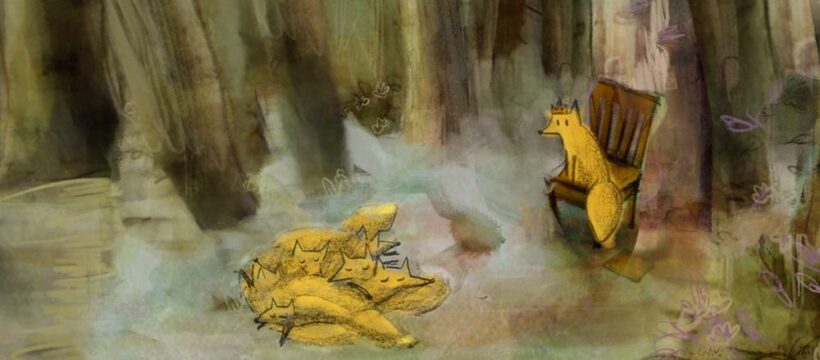France’s Annecy Intl. Animation Film Festival is celebrating Swiss animation – which marked its 100th anniversary back in 2021 – with a slew of retrospectives, screenings and special events.
In its Official Selection, Switzerland is represented through 13 films spread across different sections. The fest has collaborated with various institutions on the tribute, including the GSFA, the association of Swiss animation filmmakers, the Swiss Films Archive or the Animatou and Fantoche festivals.
All the while, notes artistic director Marcel Jean, the Focus tries to express the films’ variety and range.
“There isn’t one technique that’s associated with that country, there isn’t one style. I would say that the main characteristic is the fact that there are not that many feature films,” he says.
Still, Sam and Fred Guillaume’s “Max & Co,” Zoltán Horváth and Juan José Lozano’s “Red Jungle” will also be shown, as well as the Oscar-nominated “My Life as a Zucchini” by Claude Barras, awarded the top prize at Annecy in 2016 and now accompanied by Charlotte Desigaud’s photographic exhibition.
Noting that without international co-producers a move into features is “impossible” at the moment, Swiss artists like Marina Rosset or Jonathan Laskar enjoy expressing themselves in a shorter form.
“There is no real market for short films, but that’s the point – because there is no market, we can make what we want,” says Laskar. “In Switzerland, we are free.”
Laskar’s “The Record” is shown in the official short films competition alongside Noah Erni’s “The Invention of Less” – which sees a polar bear moving to Zurich and working as an “Uber carrier” – and “Lucky Man,” Claude Luyet’s take on the American dream.
“I had to go back to my own story, the story of my family,” says Laskar about a film revolving around a magic record, able to read one’s soul. As one man listens to it, old memories return. Including those of World War II.
“I have a Jewish background. When I was 20, I went to Germany. I could see Buchenwald [concentration camp] from my window. At first, I didn’t want to talk about this theme. But this man, he remembers the truth – that in itself is a positive thing. It’s our duty to talk about hope.”
While the festival wanted to spotlight recognizable names, from sand animation masters Gisèle and Ernest “Nag” Ansorge to Julius Pinschsewer and Georges Schwizgebel, recipient of an Annecy Honorary Cristal in 2017, it also welcomed “new blood.”
“These auteurs with strong personalities, it’s something we know about Swiss animation. But we also wanted to focus on a younger generation,” Marcel Jean tells Variety, mentioning the likes of Marcel Barelli, behind 2021 “In Nature” (“Very interesting, a very underrated filmmaker”) or Isabelle Favez.
The latter, favoring stories for a younger audience, will also show her latest TV special “Giuseppe” about a small hedgehog who wants to discover winter.
“It’s my second film made specially for children after ‘Zibilla’ [about a zebra adopted by a family of horses] and the more I am doing it, the more I love it,” she says.
“As a hedgehog, Giuseppe has limitations. He has to accept that it’s too cold for him in the winter. We keep telling our children they can do anything, but we shouldn’t lie. Sometimes, we have to accept our limits. And it can actually be a good thing.”
Marina Rosset will also skew younger in “The Queen of the Foxes,” focusing on “the saddest of all foxes.” While her minions keep bringing her discarded love letters humans were too shy to send out, she remains unmoved. After all, where are the compliments about furry ears?
“Someone was writing me love letters I didn’t want to receive. I was writing love letters, which I wasn’t sending. I started to think about all that,” she says. Admitting that her close-knit community tries its best to reflect its country’s cultural and linguistic identity.
“The Swiss animation scene can be easily defined with one word: diversity,” agrees Swiss Films’ Marcel Müller, mentioning varied techniques and topics.
“It’s strongly linked to the specificity of our little country where four different official languages are spoken,” he adds, pointing out that Swiss shorts tend to be more oriented towards arthouse and are less commercial than their French or American counterparts.
“Even Swiss people ask us: ‘Why do you want to focus on Swiss animation?!’ But when I look at Annecy’s selection over the past 10 years, Switzerland has been among the countries with the most films. It’s important, it’s just a bit under the radar,” notes Marcel Jean.
Isabelle Favez adds: “We are a small country, but you can’t really say: ‘That’s a Swiss film.’ And I like it!”

Source: Read Full Article
